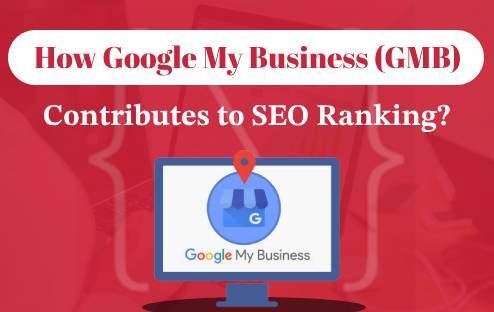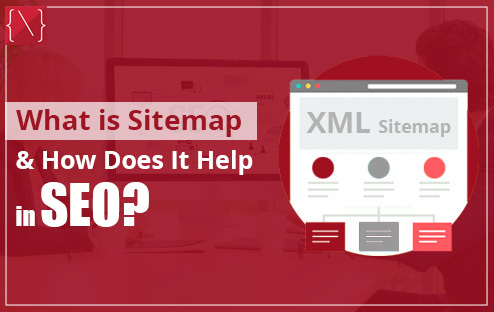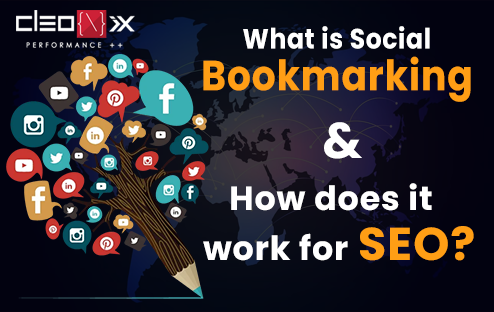
Nowadays, a strong SEO (Search Engine Optimization) strategy is no longer optional – it’s essential for driving organic traffic, increasing brand awareness, and achieving your online business goals. But with Google’s algorithms constantly evolving, staying ahead of the curve can feel overwhelming.
This guide will equip you with the latest SEO tactics and best practices for 2024, helping you take your website’s ranking and visibility to the next level.
Understanding Google’s SEO Landscape in 2024
Google’s core objective is to provide users with the most relevant and valuable search results. To achieve this, they consider a complex web of factors, including:
- Content Quality and Expertise (E-A-T): Google prioritizes content created by experts and demonstrably trustworthy sources. Focus on in-depth research, fact-checking, and showcasing your niche authority.
- User Experience (UX): A website’s ease of navigation, mobile-friendliness, and loading speed all significantly impact SEO.
- Search Intent: Go beyond basic keyword targeting. Understand the “why” behind user searches and tailor your content to answer their specific questions and needs.
- Semantic Search and Voice Search: As search queries become more conversational, optimize your content for long-tail keywords and natural language.
Building a Rock-Solid SEO Strategy for 2024
Here’s a step-by-step approach to crafting a future-proof SEO strategy for 2024:
1. Keyword Research: The Foundation of Success
- Start with a Brainstorming Session: Identify relevant topics within your niche and the questions your target audience might be asking.
- Leverage SEO Tools: Utilize keyword research tools like Google Keyword Planner to discover high-volume, low-competition keywords with strong commercial intent (search queries with the potential to convert visitors into customers).
- Prioritize Long-Tail Keywords: Target longer, more specific keyword phrases that demonstrate user intent and allow you to create highly relevant content.
2. Analyze Your Competitors
Identify your top organic competitors through tools like SEMrush or Ahrefs. Analyze their top-performing content to understand what resonates with your audience and identify potential gaps in their strategy.
3. Create Compelling Content That Stands Out
- Become a Thought Leader: Don’t just replicate what others are doing. Strive to create unique, informative content that offers a fresh perspective and valuable insights.
- Optimize for Readability: Structure your content with clear headings, subheadings, and bullet points for easy skimming and comprehension.
- Incorporate Multimedia: Integrate relevant images, infographics, and videos to enhance user engagement and break up text-heavy sections.
4. Master On-Page SEO for Enhanced Visibility
On-page SEO refers to optimizing the elements within your website to improve search engine ranking. Here’s what to focus on:
- Keyword Integration: While keyword stuffing is a penalty, strategically incorporating your target keywords throughout your content (title tags, meta descriptions, headers, and naturally within the text) is essential.
- Internal Linking: Create a strong internal linking structure to connect relevant pages on your website, allowing search engines to crawl and understand your content hierarchy.
- Image Optimization: Include relevant alt tags for all images, providing context and improving accessibility.
5. Build Good Backlinks
Backlinks (links from other websites to yours) remain a critical SEO ranking factor. Here are some strategies to secure valuable backlinks:
- Create Link-Worthy Content: People naturally want to link to high-quality, informative content. Focus on creating resources that others will find valuable enough to share.
- Guest Blogging: Contribute guest articles to reputable websites within your niche, including a link back to your own site in the author bio.
- Broken Link Building: Identify broken links on relevant websites and reach out to the webmaster, suggesting your high-quality content as a replacement.
6. Ensure User Experience (UX) for Long-Term Success
A website that ensures user experience is more likely to keep visitors engaged and coming back for more. This, in turn, sends positive signals to search engines. Here’s how to optimize your UX:
- Mobile-First Design: Ensure your website is responsive and delivers a seamless experience across all devices (desktop, mobile, tablet).
- Fast Loading Speeds: Nobody likes a slow website. Use caching plugins and image optimization techniques to ensure your pages load quickly.
- Clear Navigation: Make it easy for users to find what they’re looking for. So, implement a clear and intuitive website navigation structure.
- Optimize for Core Web Vitals: These Google metrics assess factors like loading speed, responsiveness, and visual stability – all crucial for a positive user experience.
- Focus on User Engagement: Keep visitors engaged with internal linking, calls to action, and interactive elements like polls or quizzes.
7. Embrace Continuous Monitoring and Adapting
SEO is an ongoing process. Here’s how to stay ahead of the curve:
- Utilize SEO Tracking Tools: Tools like Google Search Console and Google Analytics provide valuable insights into your website’s performance, keyword ranking, and user behavior.
- Stay Updated on Google Algorithm Changes: Google’s algorithm is constantly evolving. Regularly check industry publications and SEO resources to stay informed about the latest best practices.
- Content Refreshment is Key: Regularly review and update your top-performing content to maintain its relevance and keep Google’s crawlers coming back for more.
By following these comprehensive SEO strategies, you can take your website to the next level in 2024. Remember, SEO is a marathon, not a sprint. Focus on creating high-quality content, optimizing user experience, and building a strong online presence – and you’ll see your website climb the search engine rankings and attract a steady stream of organic traffic.

SEO or search engine optimization is a critical part of digital marketing. The process of optimizing your website to rank higher on search engine result pages (SERPs) is what SEO is all about. One of the most important aspects of SEO is determining the right keywords for your website.
Keywords are the words or phrases that people use to search for a particular service or product on search engines. Keywords play an essential role in SEO because they help search engines to understand the context and theme of your website. Using the right keywords can help improve your website’s visibility, drive traffic, and ultimately increase conversions.
So, how are the keywords determined for SEO needs? Here are some of the ways you can determine the right keywords for your website:
- Relevance: The chosen keywords must be highly relevant to your business, website content, and target audience. Targeting irrelevant keywords might attract traffic, but it won’t convert if it doesn’t match your offerings.
- Search Volume: This refers to the average number of times a particular keyword is searched for in a given period. Ideally, you want keywords with a decent search volume to attract a sizable audience. However, it’s not always about chasing the highest numbers.
- Competition: Some high-volume keywords might be extremely competitive, making it difficult for new websites to rank well. Consider the level of competition you’re facing when choosing keywords.
- Search Intent: Understanding the searcher’s intent behind a keyword is crucial. Are they looking for information, trying to compare products, or ready to make a purchase? Optimizing your content for the searcher’s intent will improve its effectiveness.
The Steps to Successful Keyword Research
Now that we understand the importance of choosing the right keywords, let’s explore the steps involved in conducting successful keyword research:
- Brainstorming Relevant Topics: Start by brainstorming a list of topics highly relevant to your niche and target audience. Think about the products or services you offer, the problems you solve, and the information your ideal customer might be searching for.
- Keyword Exploration Tools: Utilize keyword research tools like Google Keyword Planner, SEMrush, or Ahrefs to discover related keywords and search phrases. These tools provide valuable data on search volume, competition level, and even suggest long-tail keywords (more specific keyword phrases).
- Analyzing Search Results (SERPs): Take some time to analyze the top-ranking pages for your target keywords. This will give you valuable insights into the type of content that is already ranking well. You can then identify opportunities to create even better, more informative, or unique content that stands out from the competition.
- Prioritizing Your Keywords: Once you have a comprehensive list of potential keywords, prioritize them based on the factors mentioned earlier. Consider using a mix of high-volume, medium-volume, and long-tail keywords to create a well-rounded SEO strategy.
Additional SEO Considerations
While keyword research is a fundamental aspect of SEO, it’s not the only factor at play. Here are some additional considerations to keep in mind:
On-Page Optimization: Once you’ve identified your target keywords, integrate them naturally into your website content, page titles, meta descriptions, and header tags.
Content Quality: Creating high-quality, informative, and engaging content that caters to your target audience’s needs is essential. Google prioritizes valuable content that provides a positive user experience.
Backlinks: Earning backlinks (links from other websites to yours) is another crucial SEO factor. Backlinks signal to search engines that your website is trustworthy and relevant.
Conclusion
Effective keyword research is a crucial part of successful SEO strategy. By understanding the factors that influence keyword selection and following the steps outlined above, you can identify the right keywords to target and optimize your website content for better organic search visibility. Remember, SEO is an ongoing process. Regularly revisit your keyword strategy, analyze your website’s performance, and adapt your approach to stay ahead of the curve.
ALSO READ: What is Sitemap & How does It help in SEO?

In the age of digital domination, local businesses need to be present where their customers are searching – online. And when it comes to local search, Google My Business (GMB) reigns supreme. Beyond simply creating a virtual presence, GMB offers a powerful tool to boost your SEO ranking and attract more customers through your doors.
But how exactly does GMB contribute to SEO? Let’s jump into the secrets:-
1. Relevance & Visibility
- Local Pack Domination: Claiming and optimizing your GMB profile increases your chances of appearing in the coveted Local Pack, the top three business listings displayed for local searches. This prime real estate drives significant traffic and brand awareness.
- Keyword Optimization: Include relevant keywords in your business description, category selection, and posts to enhance discoverability by potential customers searching for your offerings.
- Complete & Consistent Information: Ensure your NAP (Name, Address, Phone number) is accurate and consistent across all online platforms, including your website and social media. Google favors listings with consistent information, boosting your local relevance.
2. Building Trust & Credibility
- Positive Reviews & Ratings: Encourage customers to leave positive reviews and respond to both positive and negative feedback promptly and professionally. Google considers the quantity and quality of reviews as a ranking factor, showcasing businesses with strong reputations.
- Direct Communication: Interact with your customers through reviews and Q&A sections, demonstrating responsiveness and engagement. This builds trust and strengthens your online presence.
3. Content & Engagement
- Regular Posts: Update your GMB profile with engaging posts, including photos, videos, and events. This keeps your profile fresh, attracts attention, and provides valuable information to potential customers.
- Showcase Products & Services: Highlight your offerings with detailed descriptions, high-quality visuals, and call-to-actions. This entices customers to learn more and potentially transact.
- Local Events & Offers: Promote local events, discounts, and special offers through GMB posts, attracting customers searching for deals in your area.
4. Mobile Magic
- Mobile-Friendly Profile: Ensure your GMB profile is mobile-optimized for seamless user experience on smartphones and tablets, where a significant portion of local searches occur.
- Click-to-Call & Directions: Enable click-to-call functionality and provide clear directions, making it easy for mobile users to contact and visit your business.
5. Beyond Local: GMB’s broader SEO impact
While the primary benefits lie in local search, GMB can also influence your overall SEO ranking. Positive reviews and engagement signals on your GMB profile can potentially improve your website’s ranking in organic search results.
Remember: GMB is a dynamic platform. Regularly update your profile, respond to reviews, and adapt your strategy to stay ahead of the curve. By leveraging these tips and understanding how GMB contributes to SEO, you can unlock the true potential of local search and attract more customers to your business.
Bonus Tip: Integrate your GMB profile with your website and social media for a strong online presence and further SEO benefits.
So, Start optimizing your GMB profile today and watch your local SEO soar!
ALSO READ:- What is Sitemap & How does It help in SEO?

In the world of search engine optimization (SEO), there are several tools and strategies that can help improve a website’s visibility and ranking. One such tool is the sitemap. A sitemap is a file that contains a list of all the pages on a website, along with their relationship to each other. It serves as a map for search engine crawlers to navigate and understand the structure of a website. In this blog, we will take a closer look at what sitemap is and how it can help in SEO.
What is a Sitemap?
A sitemap is a file in XML format that lists all the URLs of a website. It is created and submitted to search engines to help them crawl and index a website efficiently. It includes information such as the date the page was last updated, how often it changes, and its importance in relation to other pages on the site. Sitemaps can also contain additional metadata, such as images and videos, which can further enhance a website’s visibility in search results.
Types of Sitemaps
There are two types of sitemaps: XML sitemap and HTML sitemap. An XML sitemap is designed for search engines, while an HTML sitemap is created for human visitors. Both serve different purposes and are crucial for a well-optimized website.
XML Sitemap: As mentioned earlier, an XML sitemap is a file that search engines use to crawl and index a website’s pages. It helps search engines discover pages that may not be easily found through traditional crawling methods. It also provides valuable information about the website’s structure and content, making it easier for search engines to understand and rank the site.
HTML Sitemap: An HTML sitemap, on the other hand, is created for human visitors. It is a list of all the pages on a website, organized in a user-friendly format. It helps visitors navigate a site and find the information they are looking for quickly. HTML sitemaps also improve the user experience and can lead to increased engagement and conversions.
How does Sitemap Help in SEO?
Now that we have a better understanding of what a sitemap is let’s explore how it can benefit SEO.
1. Improved Crawling and Indexing
As mentioned earlier, a sitemap helps search engines crawl and index a website more efficiently. By providing a list of all the pages on a site, including their hierarchy and relationship, search engines can quickly discover and index new or updated content. This is especially useful for larger websites with many pages that may not be linked together or easily found through traditional crawling methods.
2. Better Visibility in Search Results
Sitemaps also help search engines understand the content and structure of a website, which can lead to better visibility in search results. By providing important information such as the date the page was last updated and its importance in relation to other pages on the site, search engines can determine the relevance and importance of a page, which can impact its ranking in search results.
3. Higher Ranking for Deep Pages
Deep pages, or pages that are buried deep within a website’s structure, may not be easily discovered by search engine crawlers. By including these pages in a sitemap, they have a higher chance of being crawled and indexed, which can improve their ranking in search results. This is especially beneficial for e-commerce websites with a large number of product pages that may not be linked to the main navigation.
4. Increased Crawl Frequency
Websites that are frequently updated may benefit from a sitemap as it can help increase the crawl frequency. By providing information about the last update for a page, search engines can determine when to re-crawl and index the page, ensuring that the most recent content is reflected in search results.
5. Enhanced User Experience
As mentioned earlier, an HTML sitemap can improve the user experience by helping visitors navigate a website more easily. It can also help visitors find the information they are looking for quickly, leading to increased engagement and conversions. This can indirectly impact SEO as search engines consider user experience as a ranking factor.
Conclusion
In conclusion, a sitemap is a valuable tool in the world of SEO. It helps search engines crawl and index a website more efficiently, leading to improved visibility and ranking in search results. It also enhances the user experience and can indirectly impact SEO. Therefore, it is essential to create and regularly update sitemaps for a well-optimized website.
ALSO READ: How Schema Markup Contributes to Your SEO Ranking?

In today’s digital age, having a strong online presence is crucial for the success of any business. And when it comes to local search, Google My Business (GMB) is a powerful tool that can significantly impact your visibility and attract potential customers. By optimizing your GMB listing, you can improve your chances of ranking higher in local search results, increasing your online visibility, and ultimately driving more traffic to your business. In this article, we will explore effective strategies to optimize your Google My Business listing and enhance your chances of ranking higher.
- Claim and Verify Your GMB Listing: The first step towards optimizing your GMB listing is to claim and verify it. Visit the Google My Business website, create an account if you don’t have one, and follow the steps to claim your business. Verification can be done via mail, phone, email, or instant verification (available for select businesses). Once verified, you’ll gain access to a range of features and options to enhance your listing.
- Complete Your Business Information: To rank higher in local search results, provide Google with as much accurate and detailed information as possible. Fill out all the fields in your GMB profile, including your business name, address, phone number, website URL, category, hours of operation, and a brief description. Make sure the information is consistent across all online platforms.
- Choose the Right Categories: Selecting the appropriate categories for your business is crucial. Be specific and choose categories that accurately represent your products or services. This helps Google understand your business and display it in relevant search results. You can select a primary category and add secondary categories if applicable.
- Optimize Your Business Description: Craft a compelling business description that effectively communicates your unique selling points and key offerings. Keep it concise, engaging, and keyword-rich. Incorporate relevant keywords naturally without keyword stuffing, as this can have a negative impact on your ranking.
- Add High-Quality Photos: Visual content plays a vital role in attracting potential customers. Include high-quality photos that showcase your business, products, and services. This can significantly impact user engagement and help differentiate your business from competitors. Upload appealing images of your storefront, interior, team, products, and any other relevant visuals that represent your brand effectively.
- Encourage Positive Reviews: Online reviews are an essential aspect of your GMB listing. Positive reviews not only boost your credibility but also contribute to higher rankings. Encourage satisfied customers to leave reviews on your GMB profile. Respond to reviews, both positive and negative, to show your engagement and willingness to address customer concerns.
- Maintain Consistent NAP Information: NAP stands for Name, Address, and Phone Number. Consistency is key when it comes to your NAP information. Ensure that your business name, address, and phone number are accurate and consistent across your GMB listing, website, social media profiles, and other directories. Inconsistent information can confuse both users and search engines, negatively impacting your ranking.
- Leverage Google Posts: Google Posts allow you to share timely updates, offers, events, or any other relevant content directly on your GMB listing. Take advantage of this feature to engage with your audience and provide them with valuable information. Regularly posting fresh content can help improve your visibility and drive more traffic to your business.
- Utilize Google Questions & Answers: The Questions & Answers section on your GMB listing enables potential customers to ask questions about your business, products, or services. Monitor this section and respond promptly to provide accurate information. By being proactive and addressing inquiries, you can build trust and establish yourself as an authority in your industry.
- Monitor Insights and Analytics: Google provides valuable insights and analytics for your GMB listing. Pay attention to these metrics to understand user behavior, search queries, and how people are finding and engaging with your business. This data can help you make informed decisions and further optimize your listing for better results.
Conclusion:
Optimizing your Google My Business listing is a powerful way to boost your online visibility and attract more local customers. By following the strategies outlined in this article, you can improve your chances of ranking higher in local search results. Remember to regularly update and maintain your listing, respond to reviews and inquiries, and provide accurate information. By leveraging the full potential of Google My Business, you can take a significant step towards growing your business in the digital landscape.
ALSO READ: What is Social Bookmarking and How does it work for SEO?

Introduction
In the vast world of search engine optimization (SEO), staying ahead of the curve is crucial. One strategy that has gained popularity in recent years is social bookmarking. It offers a unique way to enhance your website’s visibility and drive organic traffic. In this article, we will explore what social bookmarking is, how it works, and its impact on SEO.
Understanding Social Bookmarking
Social bookmarking is a method of saving, organizing, and sharing web pages or online resources through specialized platforms. Instead of saving bookmarks on your local device, you store them on a social bookmarking website. These platforms allow users to tag and categorize bookmarks, making them easily searchable by others.
How Social Bookmarking Works
Social bookmarking websites are community-driven platforms where users can create accounts and contribute by bookmarking interesting web pages. When a user discovers a webpage they find valuable, they can save it as a bookmark on the platform. These bookmarks can then be shared with other users who have similar interests.
The Benefits of Social Bookmarking for SEO
Social bookmarking offers several advantages for SEO purposes. Firstly, by submitting your website or blog to social bookmarking platforms, you can generate quality backlinks. Backlinks from high-ranking bookmarking sites can improve your website’s domain authority, leading to higher search engine rankings.
Increased Website Traffic
Another benefit of social bookmarking is the potential to drive targeted traffic to your website. When users search for specific topics or keywords on social bookmarking platforms, they may come across your bookmark and click through to your site. This increased traffic can result in higher engagement, longer session durations, and improved search engine visibility.
Enhancing Indexing and Crawling
Social bookmarking can also help search engine crawlers discover and index your website more effectively. When you bookmark a webpage, it creates a backlink to your site, which search engines can follow. This process helps search engines understand the relevance and popularity of your content, leading to improved visibility in search results.
Building Brand Awareness and Authority
Active participation in social bookmarking communities allows you to showcase your expertise and establish yourself as a trusted source within your niche. By consistently bookmarking valuable and relevant content, you can gain followers and attract an interested audience. This can lead to increased brand visibility and credibility, ultimately benefiting your overall SEO strategy.
Maximizing Social Signals
Search engines consider social signals as an important factor in determining the popularity and relevance of a website. Social bookmarking generates social signals such as likes, shares, and comments, which can contribute to your website’s overall social media presence. These signals can have a positive impact on your search engine rankings, as search engines recognize the social validation of your content.
Best Practices for Social Bookmarking
To make the most of social bookmarking for SEO, it is essential to follow some best practices. Firstly, choose high-quality bookmarking sites with a good reputation. Focus on relevant platforms that cater to your target audience. Secondly, create catchy and descriptive titles, descriptions, and tags for your bookmarks to increase their visibility. Lastly, be an active participant in the community by engaging with other users’ bookmarks, sharing valuable content, and building relationships.
Conclusion
Social bookmarking is an effective tool in the SEO arsenal, providing numerous benefits to website owners and content creators. By leveraging social bookmarking platforms, you can increase your website’s visibility, drive organic traffic, and enhance your overall SEO efforts. However, it’s important to approach social bookmarking with a strategic mindset and follow best practices to achieve optimal results. So, start exploring the world of social bookmarking.
ALSO READ: What is Influencer Marketing And How It Can Help in SEO in 2023?

Search Engine Optimization (SEO) is constantly evolving. What worked in the past might not work today, and what works today might not work tomorrow. That’s why it’s essential to stay up-to-date with the latest SEO trends.
As we approach 2023, it’s time to look at the SEO trends that will dominate the industry. In this blog post, we’ll explore the top 11 game-changing SEO trends that will help you stay ahead of the competition.
Artificial Intelligence (AI) and Machine Learning:-
AI and machine learning are not new concepts in the SEO industry. However, their importance will only continue to grow in 2023. With AI and machine learning, search engines can better understand user intent and deliver more accurate search results. As a result, optimizing for user intent will become even more critical in 2023.
Voice Search Optimization:-
Voice search is becoming increasingly popular, thanks to the rise of smart speakers and virtual assistants. In 2023, optimizing for voice search will become a game-changer. With voice search, users tend to ask more conversational questions. Therefore, optimizing your content for long-tail keywords and natural language will be essential.
Mobile-First Indexing:-
Mobile-first indexing means that search engines will use the mobile version of a website as the primary index for ranking purposes. In 2023, mobile-first indexing will become even more critical. Therefore, it’s essential to ensure that your website is mobile-friendly and optimized for mobile devices.
Page Experience:-
Page experience is a set of signals that measure how users perceive the experience of interacting with a web page. In 2023, page experience will be a crucial ranking factor. Therefore, it’s essential to focus on elements such as page speed, mobile-friendliness, safe browsing, and interactivity.
Local SEO:-
Local SEO has been essential for small and local businesses for years. In 2023, local SEO will continue to be a game-changer. With the rise of “near me” searches and location-based queries, optimizing for local search will be more critical than ever.
Video Optimization:-
Video content is becoming increasingly popular, and in 2023, video optimization will be a game-changer. With video optimization, you can improve your website’s visibility in search results, attract more traffic, and engage your audience.
Featured Snippets:-
Featured snippets are search results that appear at the top of the search engine results page (SERP). In 2023, featured snippets will be even more critical for SEO. Therefore, it’s essential to optimize your content for featured snippets to increase your chances of appearing at the top of the SERP.
Structured Data:-
Structured data provides search engines with additional context about your content. In 2023, structured data will be a game-changer for SEO. With structured data, you can enhance your search listings, attract more traffic, and improve your click-through rates.
E-A-T:-
E-A-T stands for Expertise, Authority, and Trustworthiness. In 2023, E-A-T will continue to be an essential factor for SEO. Therefore, it’s essential to establish your expertise, authority, and trustworthiness in your niche or industry.
Zero-Click Search:-
Zero-click search refers to search results that don’t require the user to click on a website to get the information they need. In 2023, zero-click search will become even more prevalent. Therefore, it’s essential to optimize your content for featured snippets, knowledge graphs, and other zero-click search results.
Image Optimization:-
Image optimization has always been a critical aspect of SEO, but it will become even more important in 2023. With visual search and image recognition technology becoming more prevalent, optimizing your images for search engines will help you attract more traffic and improve your overall SEO strategy. Some ways to optimize your images include using descriptive file names and alt tags, compressing images for faster loading times, and using high-quality images that are relevant to your content.
In conclusion, staying on top of the latest SEO trends is essential for any business or website that wants to rank higher in search engine results pages. As we approach 2023, it’s clear that AI, machine learning, voice search, mobile-first indexing, page experience, local SEO, video optimization, featured snippets, structured data, E-A-T, zero-click search, and image optimization will be the game-changing trends in the SEO industry.
By embracing these trends and implementing them into your SEO strategy, you can increase your chances of ranking higher in search results, attract more traffic to your website, and ultimately drive more conversions and revenue. So, start preparing for these SEO trends today and stay ahead of the competition in 2023 and beyond.
READ ALSO: How Toxic Backlinks Hurt SEO and How to Get Rid of Them?
About the author
Cleonix Technologies
A professional Web Development Company is highly focused on providing world class and best in the industry standard services in every domain that we work upon.

 AJ 14, Salt Lake, Sector 2, Kolkata - 700091 |
AJ 14, Salt Lake, Sector 2, Kolkata - 700091 |  743 Virginia Ave NE Atlanta, GA 30306
743 Virginia Ave NE Atlanta, GA 30306







